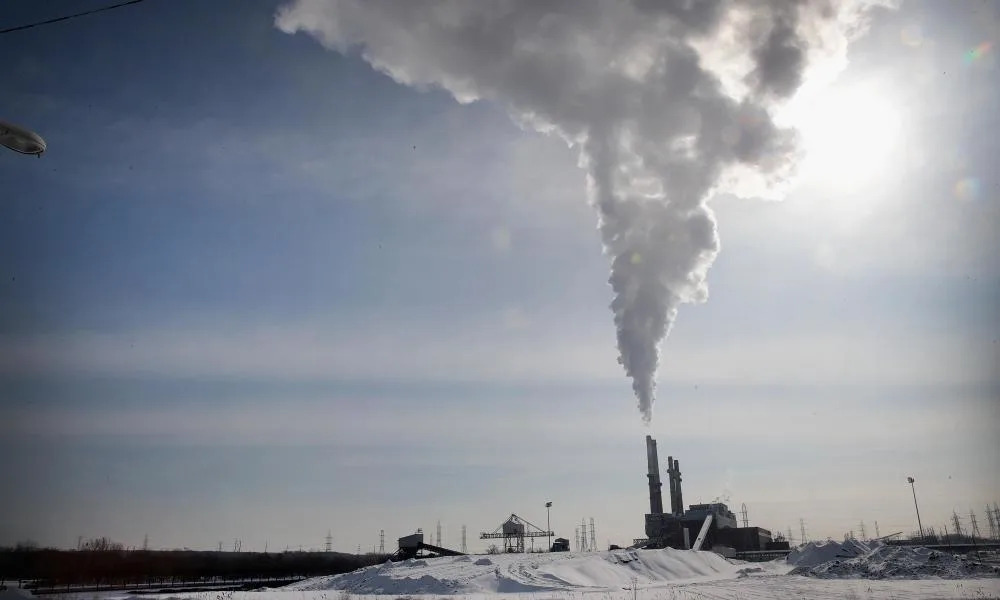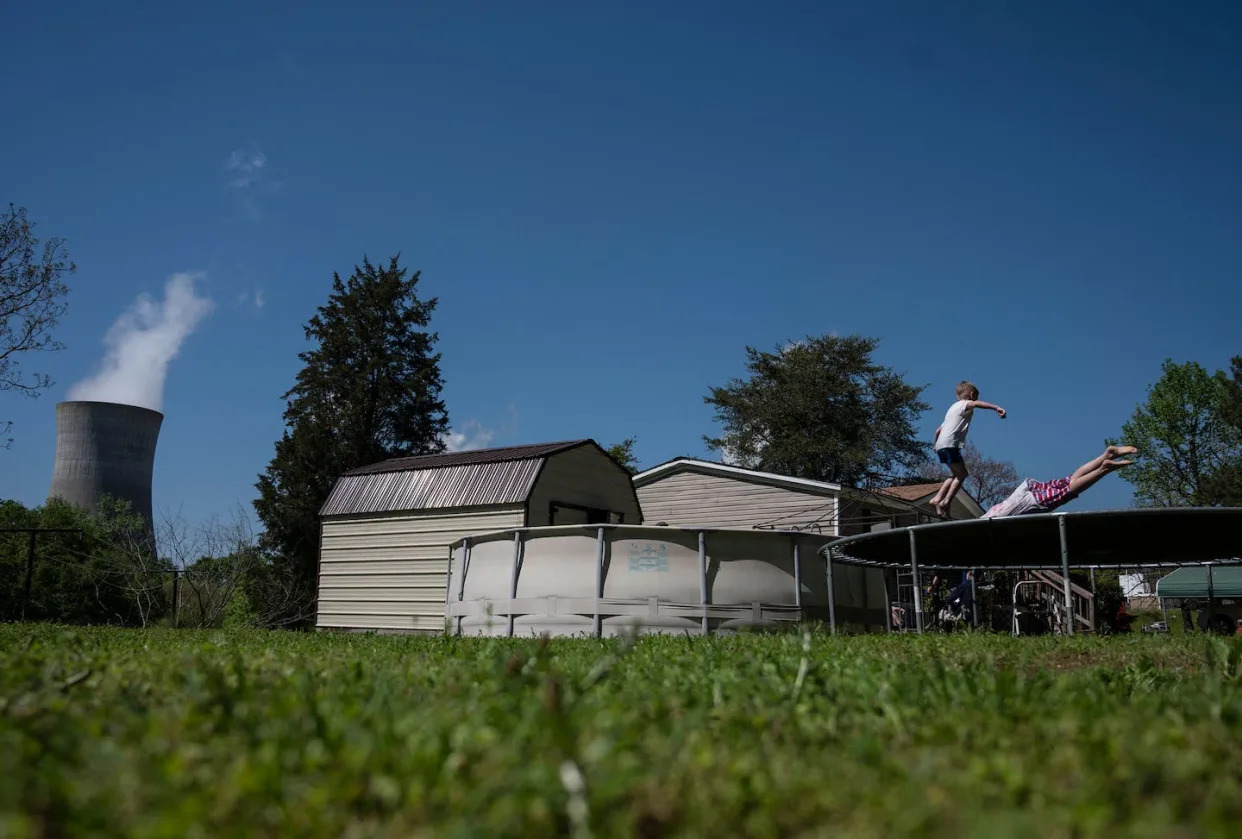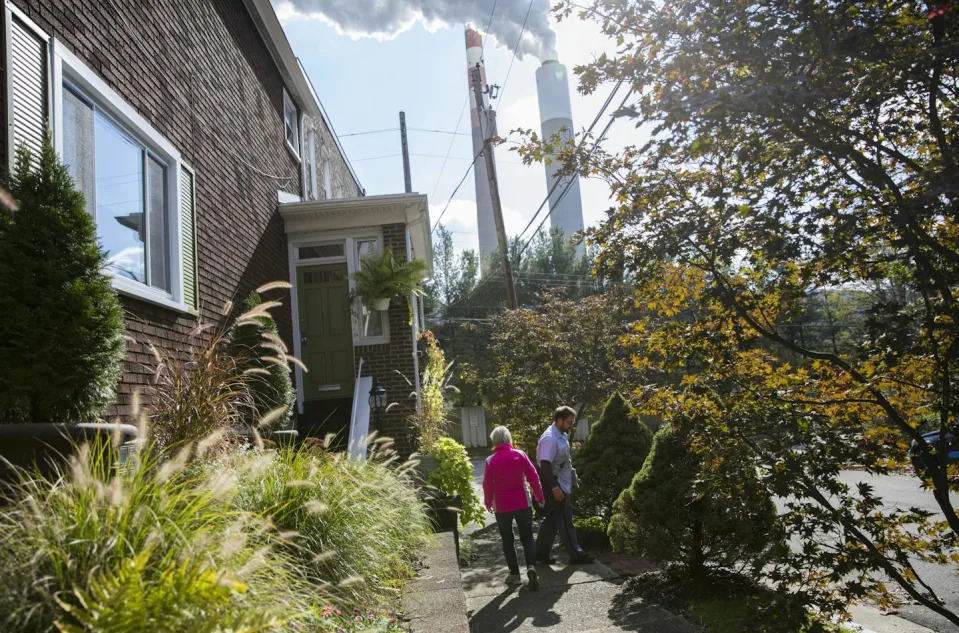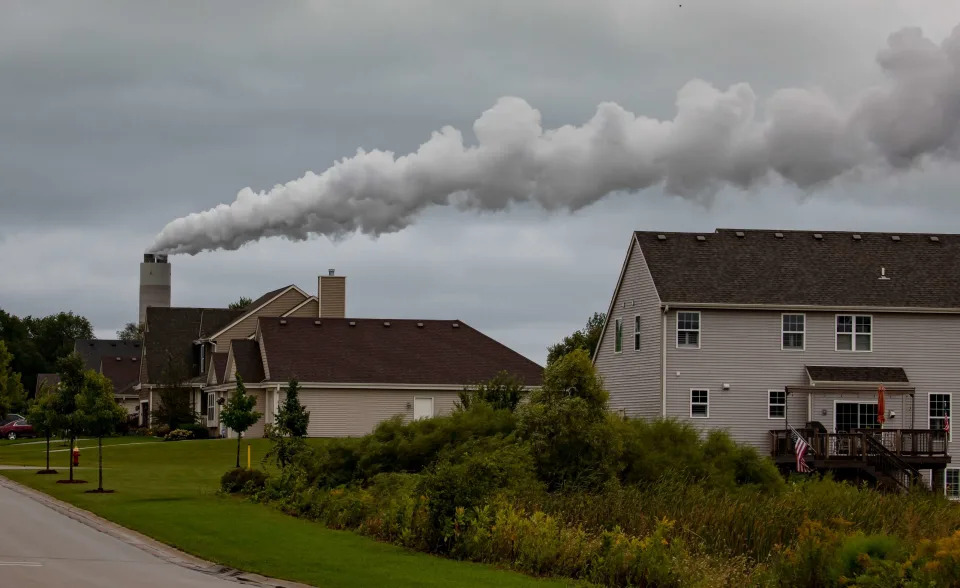Biden administration announces new methane rules at COP28 climate summit

Dec. 2 (UPI) -- The Biden administration rolled out a new final rule on methane emissions to coincide with the COP28 conference in Dubai Saturday as a new international decarbonization charter was also announced.
The Environmental Protection Agency's final rule is expected to prevent an estimated 58 million tons of methane emissions between 2024 to 2038 -- the equivalent of 1.5 billion metric tons of carbon dioxide, the EPA said in a statement.
The rule is designed to achieve a nearly 80% reduction of methane emissions over what would expected without the rule "thanks to changes that strengthen provisions to limit wasteful, polluting flaring of natural gas and analytical updates that better capture the impacts of this rulemaking," administration officials said.
"On day one, President [Joe] Biden restored America's critical role as the global leader in confronting climate change, and today we've backed up that commitment with strong action, significantly slashing methane emissions and other air pollutants that endanger communities," said EPA Administrator Michael Regan.
Related
The White House said the United States is seeking to enhance international cooperation to combat climate change at COP28, announcing it will also participate in a parallel conference addressing methane pollution alongside representatives from China and the United Arab Emirates.
Meanwhile, Vice President Kamala Harris announced a series of U.S. climate initiatives, including a $3 billion pledge to the Green Climate Fund.
"We must do more," she told leaders at the conference, but warned that "continued progress will not be possible without a fight.
"Around the world, there are those who seek to slow or stop our progress. Leaders who deny climate science, delay climate action and spread misinformation. Corporations that greenwash their climate inaction and lobby for billions of dollars in fossil fuel subsidies," Harris said.
The U.S. actions came as dozens of global energy companies agreed to the new Oil and Gas Decarbonization Charter at COP28, which calls on the energy industry to reach net zero by 2050 and to "zero-out methane emissions."
Under the initiative announced by the UAE hosts and Saudi Arabia, 50 oil and gas companies have joined pledged "high-scale impact" and to "speed up climate action within the industry."
COP28 President Sultan Al Jabar said the launch of the charter "is a great first step -- and whilst many national oil companies have adopted net zero 2050 targets for the first time, I know that they and others, can and need to do more."
According to the organizers, the 50 companies who have agreed to the charter account for 40% of the world's oil production
US targets oil and natural gas industry’s role in global warming with new rule on methane emissions
Vice President Kamala Harris speaks at the COP28 U.N. Climate Summit, Saturday, Dec. 2, 2023, in Dubai, United Arab Emirates. (AP Photo/Kamran Jebreili)
Michael Regan, administrator of the U.S. Environmental Protection Agency, speaks at the U.S. Center at the COP28 U.N. Climate Summit, Saturday, Dec. 2, 2023, in Dubai, United Arab Emirates. (AP Photo/Joshua A. Bickel)
A flare to burn methane from oil production is seen on a well pad, Aug. 26, 2021, near Watford City, N.D. On Saturday, Dec. 2, 2023, the Biden administration issued a final rule aimed at reducing methane emissions, targeting the U.S. oil and natural gas industry for its role in global warming as President Joe Biden seeks to advance his climate legacy.
December 2, 2023
WASHINGTON (AP) — The Biden administration on Saturday issued a final rule aimed at reducing methane emissions, targeting the U.S. oil and natural gas industry for its role in global warming as President Joe Biden seeks to advance his climate legacy.
The Environmental Protection Agency said the rule will sharply reduce methane and other harmful air pollutants generated by the oil and gas industry, promote use of cutting-edge methane detection technologies and deliver significant public health benefits in the form of reduced hospital visits, lost school days and even deaths. Air pollution from oil and gas operations can cause cancer, harm the nervous and respiratory systems and contribute to birth defects.
EPA Administrator Michael Regan and White House climate adviser Ali Zaidi announced the final rule at the U.N. climate conference in the United Arab Emirates. Separately, the president of the climate summit announced Saturday that 50 oil companies representing nearly half of global production have pledged to reach near-zero methane emissions and end routine flaring in their operations by 2030.
Vice President Kamala Harris, the top American representative at the summit, said the U.S. and other nations must act boldly to confront the fallout from climate change.
“The urgency of this moment is clear,” Harris said. “The clock is no longer just ticking. It is banging. And we must make up for lost time.”
The U.S. rule on methane emissions is part of a broader effort by the Biden administration that includes financial incentives to buy electric vehicles and upgrade infrastructure — spending that Harris said will total roughly $1 trillion over 10 years.
Oil and gas operations are the largest industrial source of methane, the main component in natural gas and far more potent than carbon dioxide in the short term. It is responsible for about one-third of planet-warming greenhouse gas emissions. Sharp cuts in methane emissions are a global priority to slow the rate of climate change and are a major topic at the conference, known as COP28.
Presidents, prime ministers and royals from nations rich and poor have vowed to reduce how much their countries spew heat-trapping gases and asked their colleagues to do better.
“On Day One, President Biden restored America’s critical role as the global leader in confronting climate change,’' Regan said, referring to Biden’s actions returning the U.S. to the Paris climate agreement and ordering an immediate review of environmental regulations rolled back by the previous administration.
The methane rule finalizes a proposal Biden made at a UN climate conference in Scotland in 2021 and expanded a year later at a climate conference in Egypt. It targets emissions from existing oil and gas wells nationwide, rather than focusing only on new wells, as previous EPA regulations have done. It also regulates smaller wells that will be required to find and plug methane leaks. Such wells currently are subject to an initial inspection but are rarely checked again for leaks.
Studies have found that smaller wells produce just 6% of the nation’s oil and gas but account for up to half the methane emissions from well sites.
The plan also will phase in a requirement for energy companies to eliminate routine flaring, or burning of natural gas that is produced by new oil wells.
The new methane rule will help ensure that the United States meets a goal set by more than 100 nations to cut methane emissions by 30% by 2030 from 2020 levels, Regan said.
The EPA rule is just one of more than 100 actions the Biden administration has taken to reduce methane emissions, Zaidi added.
“From mobilizing billions in investment to plug orphaned wells, patch leaky pipes and reclaim abandoned mines, to setting strong standards that will cut pollution from the oil and gas sector, the Biden-Harris Administration is putting the full throw-weight of the federal government into slashing harmful methane pollution,’' he said.
The new rule will be coordinated with a methane fee approved in the 2022 climate law. The fee, set to take effect next year, will charge energy producers that exceed a certain level of methane emissions as much as $1,500 per metric ton of methane. The plan marks the first time the U.S. government has directly imposed a fee, or tax, on greenhouse gas emissions.
The law allows exemptions for companies that comply with the EPA’s standards or fall below a certain emissions threshold. It also includes $1.5 billon in grants and other spending to help companies and local communities improve monitoring and data collection, and find and repair natural gas leaks.
Harold Wimmer, president and CEO of the American Lung Association, called the new rule a victory for public health.
“EPA heeded the urgent guidance of health experts across the country and finalized a strong methane rule that, when fully implemented, will significantly reduce hazardous air pollutants and climate-warming methane pollution from the oil and gas industry,’' he said in a statement.
Methane has been shown to leak into the atmosphere during every stage of oil and gas production, Wimmer said, and people who live near oil and gas wells are especially vulnerable to these exposure risks.
David Doniger, a climate expert at the Natural Resources Defense Council, called methane a “super-polluter.” He said in an interview that the Biden plan “takes a very solid whack at climate pollution. I wish this had happened 10 years ago (under the Obama administration), but I’m really happy it’s happening now.’'
Fred Krupp, president of the Environmental Defense Fund, said the new rule ensures that “the U.S. now has the most protective methane pollution limits on the books. With other countries also zeroing in on methane as a key climate risk, it’s a signal to operators worldwide that clean-up time is here,’' he said.
The American Petroleum Institute, the oil industry’s top lobbying group, said it was reviewing the rule to see whether it meets a dual goal of reducing emissions while meeting rising energy demand.
“Smart federal regulation can help build on industry’s progress to date,’' said Dustin Meyer, an API vice president.
The oil industry has generally welcomed direct federal regulation on methane, preferring a national standard to a hodgepodge of state rules. Even so, energy companies have asked EPA to exempt hundreds of thousands of the nation’s smallest wells from the pending rule.
__
Associated Press writer Will Weissert in Dubai, United Arab Emirates, contributed to this report.
Michael Regan, administrator of the U.S. Environmental Protection Agency, speaks at the U.S. Center at the COP28 U.N. Climate Summit, Saturday, Dec. 2, 2023, in Dubai, United Arab Emirates. (AP Photo/Joshua A. Bickel)
Michael Regan, administrator of the U.S. Environmental Protection Agency, speaks at the U.S. Center at the COP28 U.N. Climate Summit, Saturday, Dec. 2, 2023, in Dubai, United Arab Emirates. (AP Photo/Joshua A. Bickel)
AES Indiana Petersburg Generating Station, a coal-fired power plant, operates in Petersburg, Ind., on Wednesday, Oct. 25, 2023. (AP Photo/Joshua A. Bickel)
John Kerry, U.S. Special Presidential Envoy for Climate, attends an event on nuclear energy at the COP28 U.N. Climate Summit, Saturday, Dec. 2, 2023, in Dubai, United Arab Emirates. (AP Photo/Peter Dejong)
John Kerry, U.S. Special Presidential Envoy for Climate, center right, attends an event in support of tripling global nuclear capacity by 2050 at the COP28 U.N. Climate Summit, Saturday, Dec. 2, 2023, in Dubai, United Arab Emirates. (AP Photo/Peter Dejong)
BY SETH BORENSTEIN
December 2, 2023
DUBAI, United Arab Emirates (AP) — The United States committed Saturday to the idea of phasing out coal power plants, joining 56 other nations in kicking the coal habit that’s a huge factor in global warming.
U.S. Special Envoy John Kerry announced that America was joining the Powering Past Coal Alliance, which means the Biden Administration commits to building no new coal plants and phasing out existing plants. No date was given for when the existing plants would have to go, but other Biden regulatory actions and international commitments already in the works had meant no coal by 2035.
“We will be working to accelerate unabated coal phase-out across the world, building stronger economies and more resilient communities,” Kerry said in a statement. “The first step is to stop making the problem worse: stop building new unabated coal power plants.”
Coal power plants have already been shutting down across the nation due to economics, and no new coal facilities were in the works, so “we were heading to retiring coal by the end of the decade anyway,” said climate analyst Alden Meyer of the European think-tank E3G. That’s because natural gas and renewable energy are cheaper, so it was market forces, he said.
At COP28 meeting, oil companies pledge to combat methane. Environmentalists call it a “smokescreen”
As of October, just under 20% of the U.S. electricity is powered by coal, according to the U.S. Department of Energy. The amount of coal burned in the United States last year is less than half what it was in 2008.
Coal produces about 211 pounds (96 kilograms) of heat-trapping carbon dioxide per million BTUs of energy produced, compared to natural gas which produces about 117 pounds (53 kilograms) and gasoline which is about 156 pounds (71 kilograms), according to the U.S. Energy Information Administration.
The U.S. had been pushing other nations, especially China and India which are building new coal plants pell-mell, to get rid of the fuel, which causes more heat-trapping carbon emissions than other power systems.
Saturday’s action “sends a pretty powerful international signal that the U.S. is putting its money where its mouth is,” Meyer said.
The Powering Past Coal Alliance started six years ago and had 50 country members until Saturday when the United States and six others joined, said alliance spokeswoman Anna Drazkiewicz. Others joining Saturday include the Czech Republic and the Dominican Republic.
“Energy transition is not an easy task and as such requires strong cooperation and support,” said Kosovo environment minister Artane Rizvanolli. “Joining the Powering Past Coal Alliance reiterates Kosovo’s clear commitment and ongoing efforts towards a socially just and clean energy sector.”
___
Read more of AP’s climate coverage at http://www.apnews.com/climate-and-environment.

















